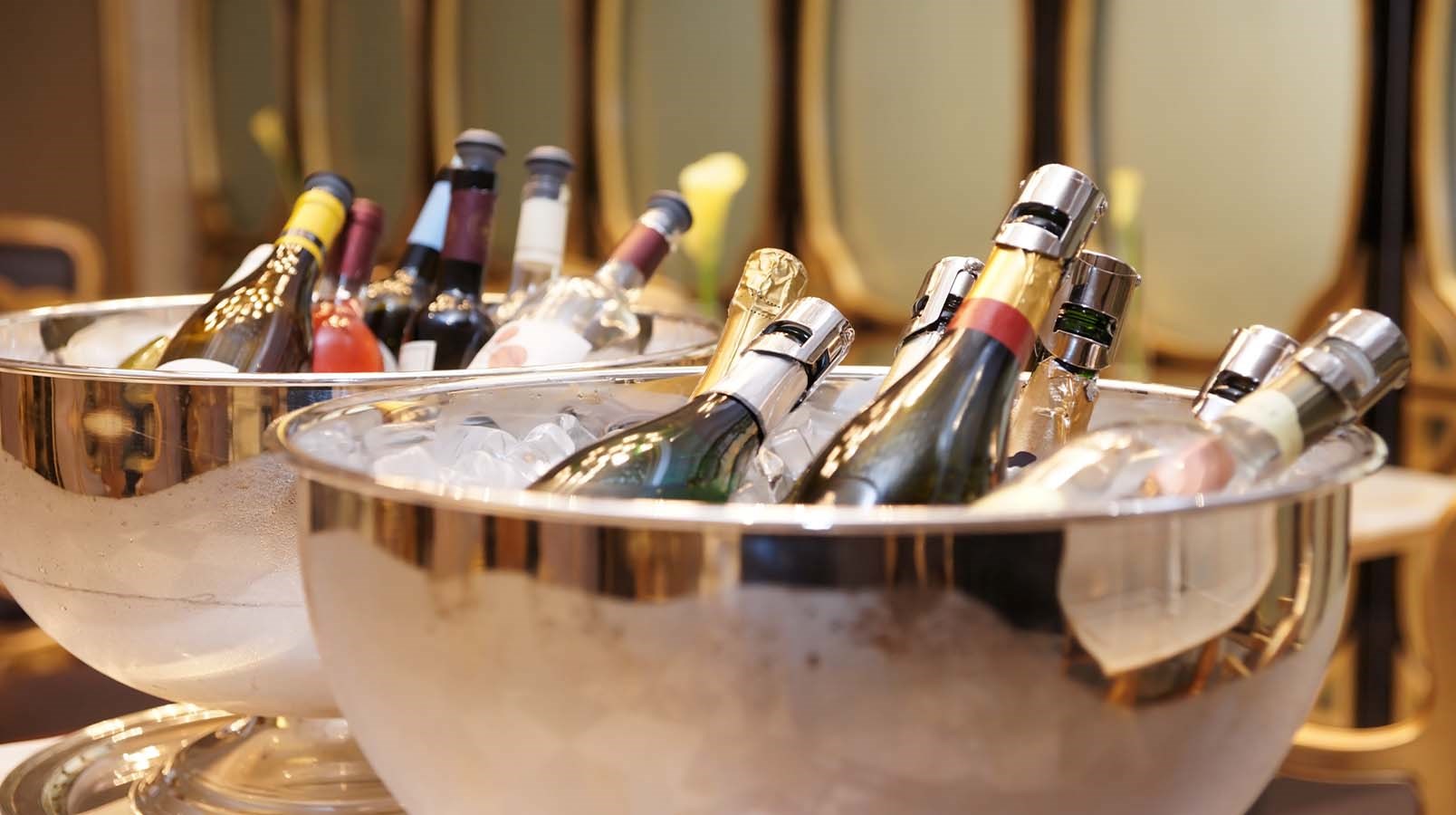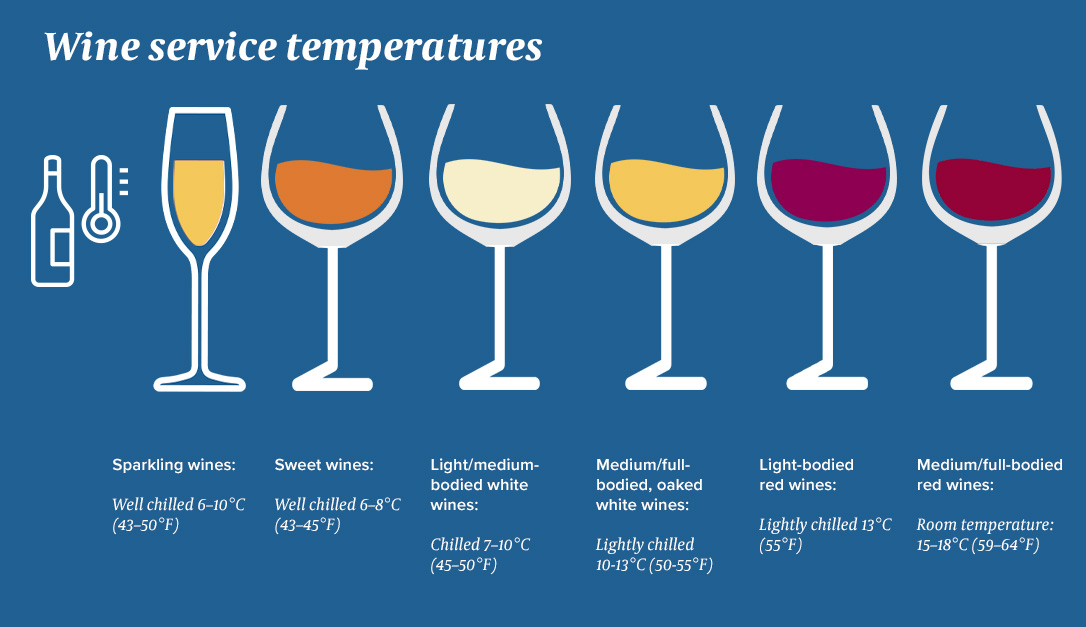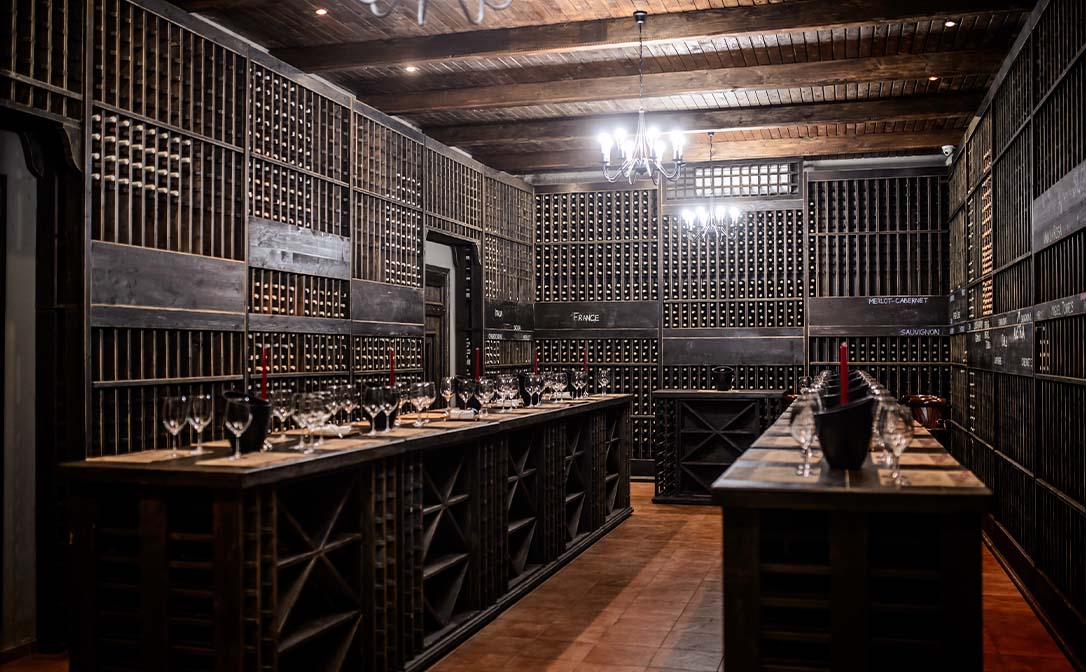When you hear the expression serve at room temperature, what number comes to mind?
While the Oxford English Dictionary states that room temperature is conventionally taken as about 20 °C (68 °F), it might actually surprise you to discover that what's referred to as ‘room temperature for wines’ might leave you reaching for a sweatshirt, as it's actually, a bit cooler: 15 to 18 °C (59–64 °F).
What we've come to expect as normal room temperature for us is actually quite a bit warmer than the optimal serving temperature for wines. With the widespread use of air conditioning and central heating, rooms can often be either too hot or even sometimes too cold.
How to serve wine at the correct temperature
So why do we talk about service temperature? Generally speaking, wines show their best and the fullest expression of their styles and flavours when served at particular temperatures.
What temperature should you serve red wines?
Full-bodied red wines should be served at room temperature. If reds are too cold, they may taste thin and harsh.
Although you might be tempted to warm a red quickly, perhaps by placing it near a radiator, sudden exposure to extreme heat can permanently damage the wine. Instead, a good way to gently warm a wine is to hold the bowl of the glass in your hands.
If these wines are served at a temperature, exceeding 18°C (64 °F), they can appear to lose their freshness and their flavour structure can become muddled. However, so long as they haven’t been heated too quickly, once they’ve cooled to the optimal service temperature, they should regain their balance.
Top Tip: Remember that an ice bucket should always be three-quarters filled with equal quantities of ice and water so that the bottle of wine is fully surrounded by iced water. The water is then able to transfer the heat from the bottle to melt the ice. Air acts as an insulator and a bottle in ice alone will chill very slowly until some of the ice has melted.
What temperature should you serve sparkling, white and rosé wines ?
As sparkling, white and rosé wines are best served chilled, ice buckets are commonly used in restaurants or bars to keep these wines cold at the table. However, there are some differences in the ideal temperature to serve white wines.
A full-bodied white, such as an oaked Chardonnay may only need to be lightly chilled (around 10-13°C,50-55 °F), whereas light or medium-bodied whites, such as a Pinot Grigio will benefit from being served a little colder.
Just as wines can be served too warm (losing their freshness), it should be noted that over-chilling, to below 6°C (43°F), can mask the flavours in white, rosé and sparkling wines.
Dreaming of becoming a sommelier or interested in landing the basics of wine service? Read our exclusive blog on the day in the life of a sommelier. We gained exclusive access to what a somm’s day consists of at a top London restaurant. Tap here.
How to store wine for ageing
Have you ever considered building or starting your own wine cellar? Some wines will develop and improve with age but to age a wine effectively you must store it in optimal conditions.
If a wine is stored incorrectly, it can affect the flavour and, in some cases, can cause the wine to become faulty. If you are fortunate enough to have the space to start building your own wine collection, it can be a great way to buy wines when they are a little more affordable.
Remember to consider the following:
Cool, constant temperatures
If you want to store a wine for a long time to get the best development inside the bottle, the temperature must be controlled and regulated. Your storage area must be kept at a lower than room temperature at 10-15 °C (50-59°F).
It might surprise you but one of the worst place to store wine is in your kitchen. This room commonly experiences large fluctuations in temperature. If wines are stored in the fridge for too long, corks can lose their elasticity and become hard. This affects the seal and can cause wines to become stale and even sparkling wines to lose their fizz.
If sealed with a cork, lay on its side
Imagine you are putting the bottle to bed. It needs to sleep in the dark and usually on its side. This is most important when the bottle is sealed with a cork as over time the cork will dry out. If stored vertically, the cork can crumble into the bottle and also let air in thus oxidising the wine and spoiling its flavours. If the bottle is laid flat, the cork is constantly in contact with moisture, preventing it from drying out.
If your wine has a screwcap or stelvin it can be stored standing vertically. It is a common myth that screwcap wines can’t be aged. Many wines are now sealed using this method (around 25-30%) and some of the best wines from Australia and New Zealand have screwcaps. If you want to age a wine with a screwcap closure, it is best to pick a wine that already has body, tannins, alcohol and structure like a Central Otago Pinot Noir.
Let it rest in the dark
As previously mentioned, wines should be stored without exposure to bright light. This includes UV sunlight or fluorescent LED lighting. Lighting can often contribute to causing the wine to heat up and, as we discussed in temperature fluctuations, this is not good for long-term storage.
There is also substantial research that shows that light causes chemical restructuring in the bottle, hence why wine is rarely bottled in clear glass bottles! The basis of this is that sulphurous compounds are created at a faster rate which essentially speeds up ageing and can develop unpleasant flavours.
No ‘good vibrations’ ✌
Providing you can avoid earthquakes or storing your wines below a really loud nightclub, this shouldn’t be an issue for you. But vibrations can disturb wines and unsettle the flavours inside. You might have seen some home improvement projects where someone has literally created wine draws in their staircase.
While this might have seemed like a great space-saving idea, it’s not great for the wine. Essentially vibrations disturb the sediment in a wine and cause chemical reactions to take place which can lead to a reduction in certain acids and esters!
If you’d like to learn the principles behind what makes a wine have ageing potential, then the Level 3 Award in Wines will teach you the factors contributing to the style and quality of a wine. Tap here to find out more.
Related content:
- The ultimate guide to wine bottle shapes and sizes
- How to read a wine list in a restaurant or bar
- How do you taste wine?




